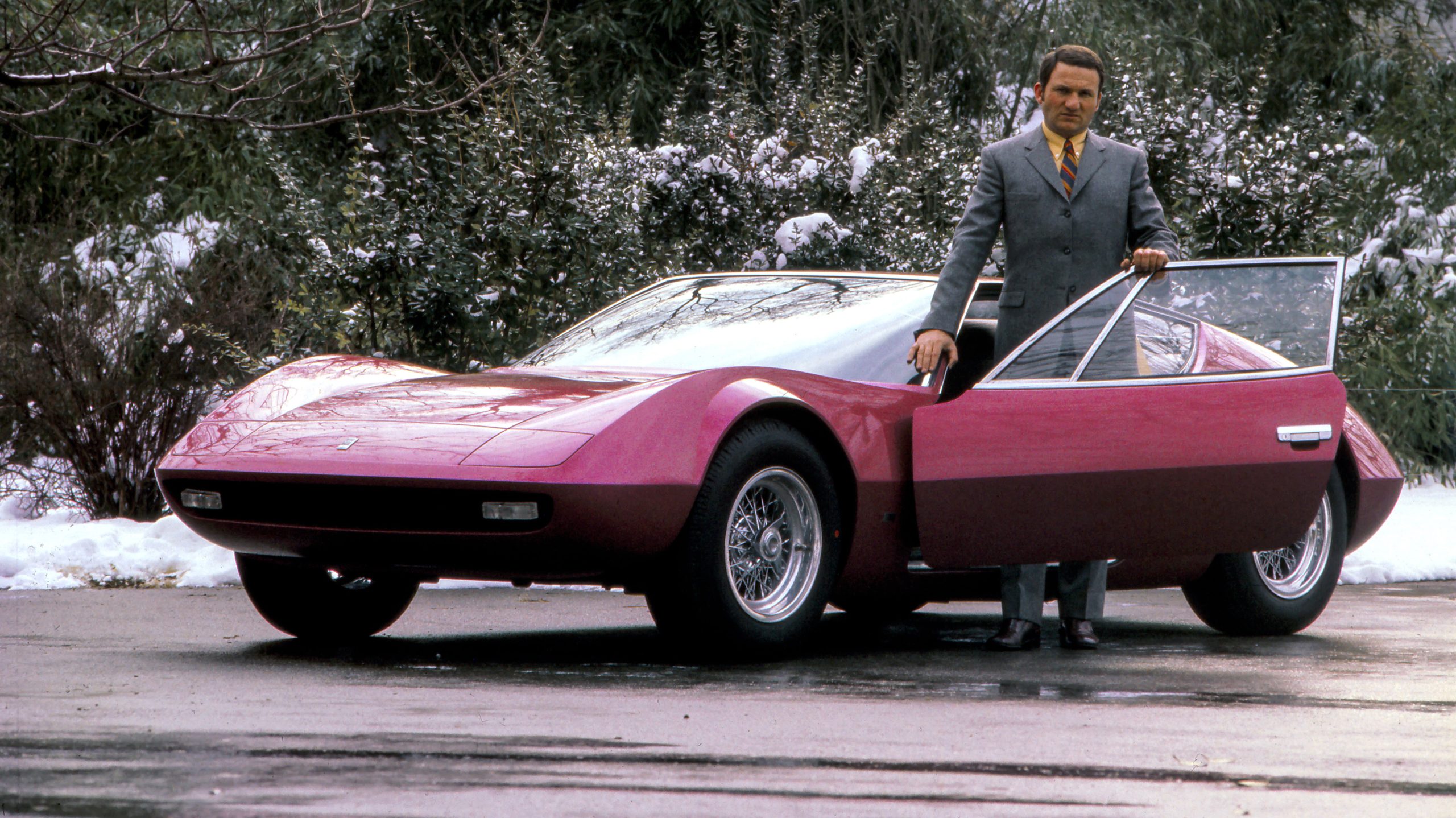
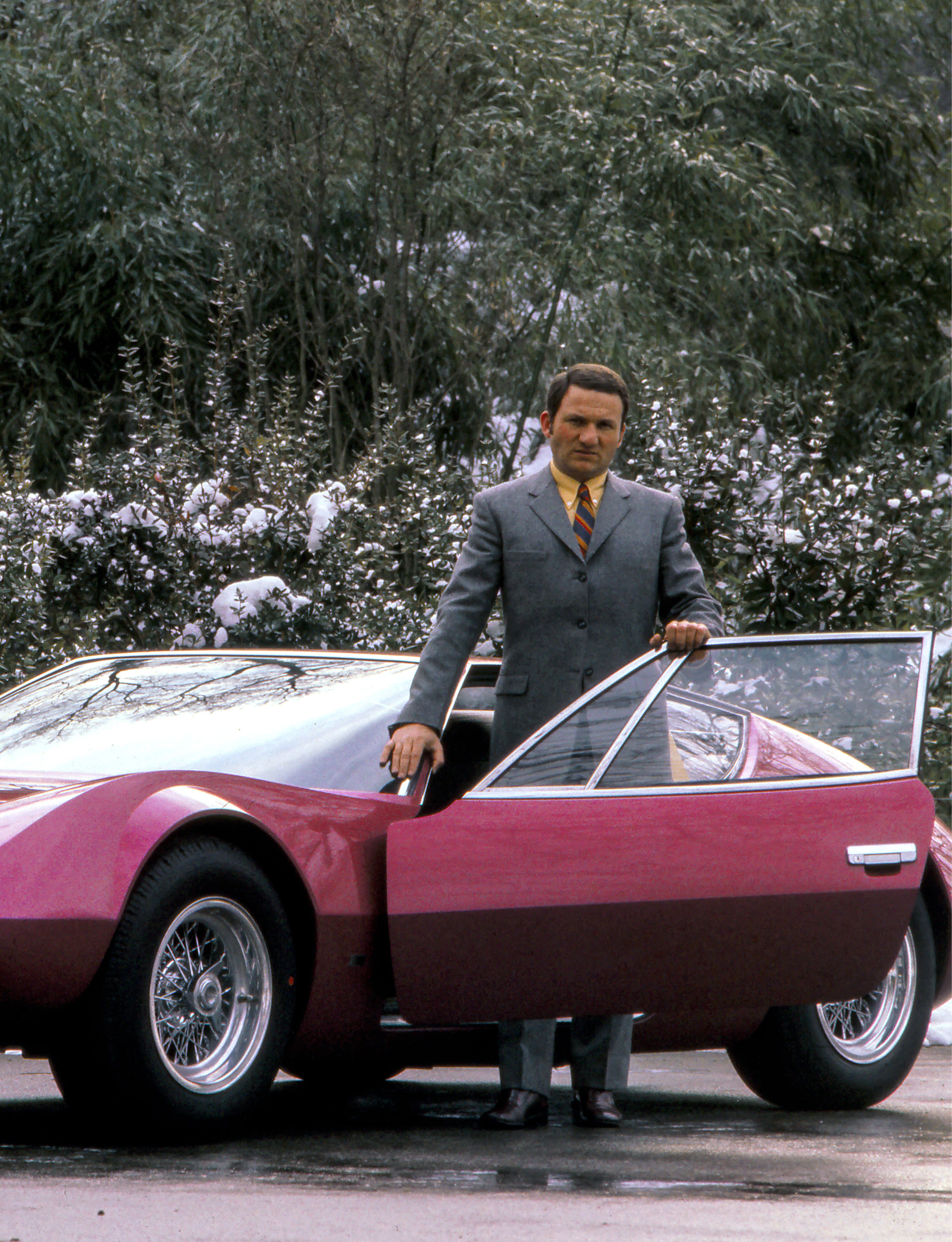

As a connoisseur of all things Swiss, and a self-confessed petrolhead, The Insider’s Martin Green has become captivated by the legend of Peter Monteverdi and the stylish, hand-crafted vehicles that once put Switzerland on the global carmaking map. We think you will be, too…
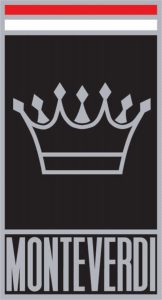
Unless you’re a classic car afficionado you probably won’t recognize the Monteverdi badge with its distinctive crown. And you almost certainly won’t ever have seen it out on the road, since, like most automotive exotica these days, Monteverdi cars are simply too valuable to drive in everyday conditions.
But these cars did – and do – exist. And they remain the sole standard bearers of an era when Switzerland muscled its way into a luxury car industry dominated by the country’s Italian and German neighbors, accompanied by a colorful backstory that features explosive personalities such as Enzo Ferrari and, of course, the main protagonist himself: Peter Monteverdi.
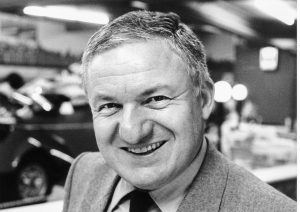
Maverick, dreamer, visionary… until his untimely death from cancer in 1998, Peter Monteverdi lived life in the fast lane – quite literally given the impressive top speeds of the cars he designed, and which were hand-built at his company’s factory/showroom in Binningen, a municipality in the canton of Basel.
Monteverdi was born in Binningen in 1934 to parents of Italian heritage. His father, Rosolino Monteverdi, was in the automotive trade, operating a service garage and truck repair business that he’d established in the town in 1924.
Early automotive adventures
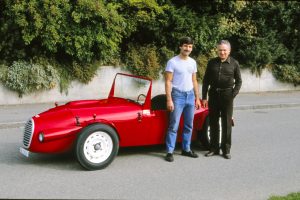
It was vehicles of a rather more exciting variety that stirred Peter Monteverdi’s blood, however, and he didn’t just dream of fast cars, he built them – from an early age. He was just 16 years old when he started hand-crafting his first car, the Monteverdi Special, built from a crash-damaged Fiat 1100 which he endowed with homemade bodywork plus cannibalized parts including headlights taken from a Vespa motorcycle!
The Special was ready to take to the road in 1952; but just four years later his father died, leaving Peter – at the age of 22 – to take over the family business in Binningen. He immediately set about transforming it from its prosaic roots to become a luxury car dealership incorporating a workshop which could produce racing cars to his own design.
His ultimate ambition was to become a professional racing driver. And from 1956 to 1961 he competed in some 80 events across Europe, including the famous Nürburgring 1000KM sports car race.
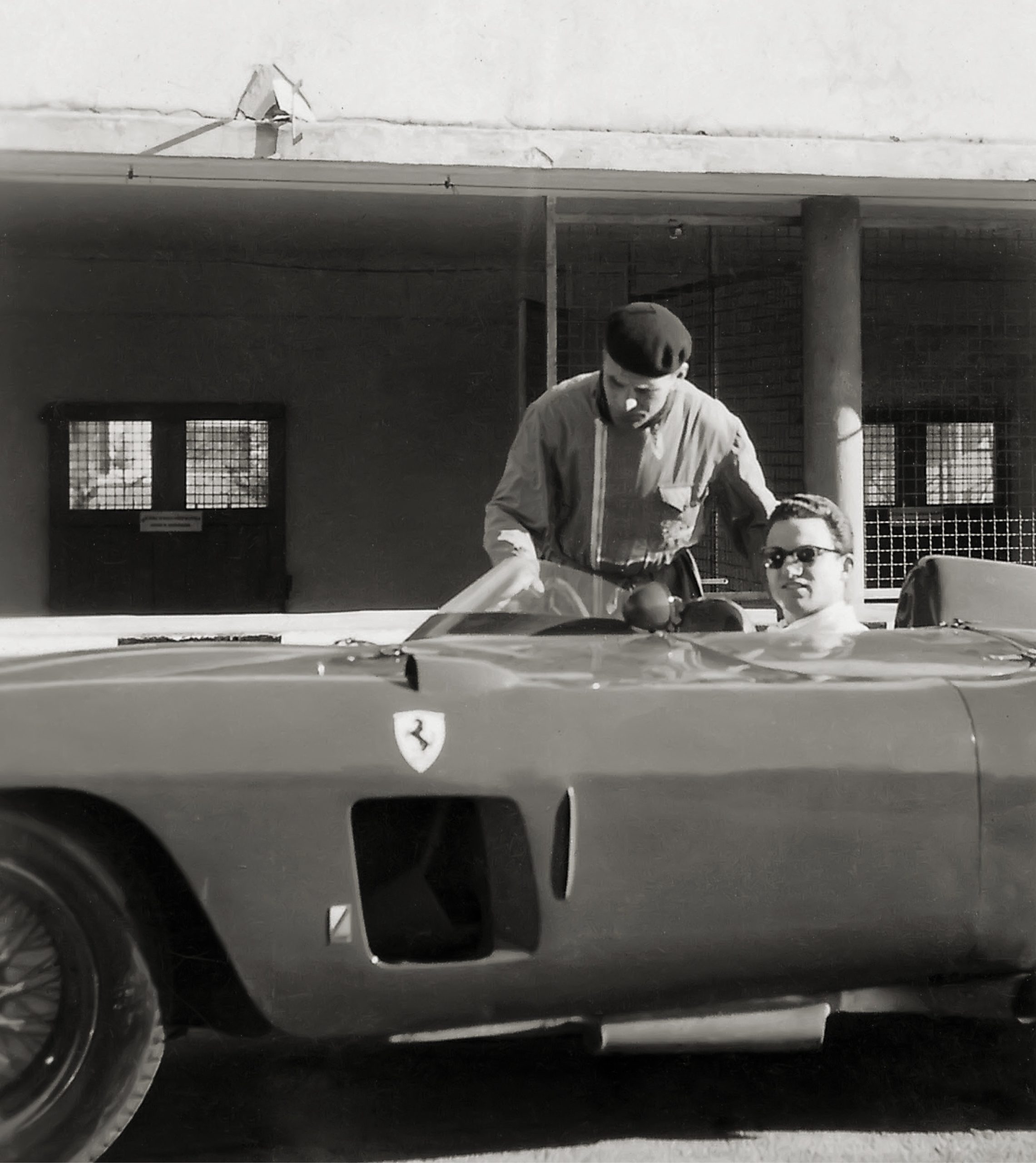
The Ferrari connection
Some of these outings were in a privately entered Ferrari, and this had brought the young Monteverdi to the attention of the Italian marque’s legendary founder, Enzo Ferrari.
In one of the many displays of Monteverdi’s audacity, he visited the factory at Maranello and offered to buy a Ferrari Testa Rossa racing car (see photo) only if ‘Il Commendatore’ would let him become an official concessionaire for Switzerland. Incredibly, Ferrari agreed, making him the youngest Ferrari representative in the world!
Monteverdi’s ultimate ambition to become a Ferrari factory driver was thwarted, with Enzo Ferrari himself delivering the bad news that he didn’t consider the young Swiss experienced enough to take on the role. However, his business was going from strength to strength, and he exchanged the cramped garage premises he’d inherited for a much larger, purpose-built, five-storey workshop and showroom, featuring elegant sales and exhibition spaces plus private apartments on the top floors.
The new Monteverdi garage showcased not just Ferrari but also Lancia, BMW and luxury marques such as Rolls-Royce and Bentley. As an added flourish typical of the man, Monteverdi even kept a flock of flamingos on the top floor terrace!
On the racetrack, Monteverdi continued to design, build, and drive his own racing cars, including one that became the first Swiss-made car to venture into Formula 1, when it was entered into a non-championship race in Germany in 1961. Shortly after his F1 creation made its debut, a serious accident at Hockenheim ended his racing career, and almost his life. Thankfully Monteverdi recovered, with the experience doing nothing to dull his passion for automotive design and manufacturing.
A four-wheeled revenge on Ferrari
The pivotal point in our story came in 1965, when Enzo Ferrari informed Monteverdi that his privileged representative status was ending, despite years of him racing and selling the company’s cars.
Wounded by the snub, Monteverdi politely drew the curtains on the collaboration and, like Ferruccio Lamborghini before him, used the disagreement as the spur to create a rival sports car marque in his own name.
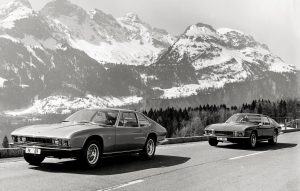
With typical bravura, the first model was named the Monteverdi High Speed 375S. The car had taken years to develop and produce, and it incorporated hand-crafted bodywork from legendary Italian coachbuilders (initially Frua and later Fissore), added to a chassis made in Binningen. Power came from a 7.2-liter V8 Chrysler block, pushing the car to a top speed of 270 km/h and achieving Monteverdi’s ambition to mix the elegance of Italian coachbuilding with the punch of an American ‘muscle car’.
The High Speed 375S made its public debut at the Frankfurt Motor Show in September 1967, becoming the first car for 30 years to bear the ‘Made in Switzerland’ label. Dubbed by contemporary newsreels as “a classy sports car that attracts a lot of attention” it carried an equally classy price tag: 58,000 Swiss francs – corresponding to CHF 201,000 in today’s money, and more expensive than rival products from Ferrari and Aston Martin at that time.
Discerning buyers were not deterred, however, and finished cars were dispatched to customers in Europe, the United States, the Middle East, and Asia.
A Swiss success story
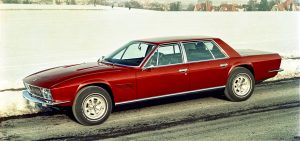
The High Speed 375 model range continued to expand throughout its production life, with the notable additions of two different convertibles as well as a four-door luxury sedan version, the High Speed 375/4, which boasted a full leather interior, electric windows, air conditioning, and luxury options including a bar and a Sony TV!
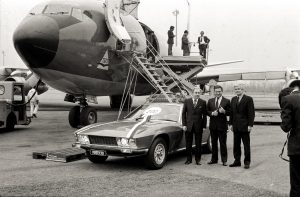
Although the company’s record-keeping was a little haphazard, it is estimated that in total more than 200 examples of the High Speed in its various guises were made and sold – certainly there is photographic evidence (see above) of the 200th car proudly bearing a rosette to that effect when being air freighted to its purchaser in Hong Kong. That may not sound like a lot of cars, but keep in mind that in the 1960s Ferrari itself was making less than a thousand cars a year.
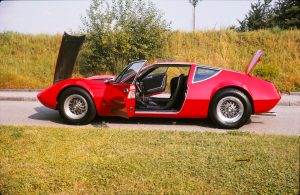
In 1970 the company’s model portfolio was augmented by another stunning Monteverdi creation, the Hai (it means shark in German) 450 SS, a mid-engine, short wheelbase super sports car with futuristic looks (courtesy of Fissore’s Trevor Fiore) that caused a sensation when it made its debut at the Geneva Motor Show.
Unfortunately, the car’s stiff price tag ($27,000 – equivalent to $217,000 today) deterred buyers. Only two examples were made in period, although late in his life Peter Monteverdi built two ‘continuation models’ from spare parts.
Oil price up, car sales down
Like many independent luxury and sports car manufacturers, Monteverdi overcame challenges at every step of the journey from sketchpad to showroom. Some of them were of his own making; the result of single-mindedness coupled with a hot temper.
As his business partner Paul Berger remarked in a film dedicated to Monteverdi and his cars, “If he had something in his mind and it didn’t work the way he wanted, then the devil was loose. He always said ‘it has to go like this’ and then his head went through the wall!”
However, there was one vital factor that Monteverdi couldn’t control: the health of the global economy. The Oil Crisis of 1973 – which quadrupled the price of a barrel of crude oil almost overnight – was a body blow for low volume sports car manufacturing. Monteverdi was not immune to its effects; the company simply couldn’t sell its high end cars in sufficient volumes to retain series production.
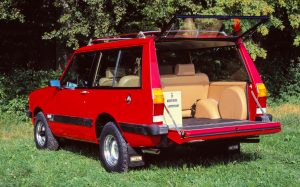
Instead, the brand ventured into the offroad category, after Peter Monteverdi spotted a gap in the market for a more refined and luxurious version of models like the Range Rover, which in those days were much more workmanlike than today’s equivalents.
The Monteverdi Safari was duly launched in 1976, with the more affordable Sahara joining it in 1978. The Safari in particular was a notable success, with total sales of some 2,700 examples, making it by far the all-time best-selling Monteverdi model. During its production life, the workshop at coachbuilders Fissore had to be expanded to cater for demand!
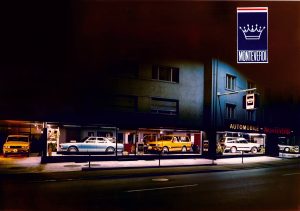
There was also a final foray into the luxury sedan category with the Monteverdi Sierra, of which some 35 examples were built from its launch in 1977 to the end of production in 1980.
The very last Monteverdi car to be sold, the Tiara, was based on a Mercedes 500 SEL, with a redesigned front and rear end. Just three examples were made before production ceased in 1983, bringing down the curtain on Monteverdi as a car manufacturer.
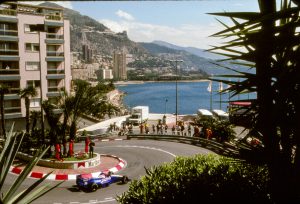
It wasn’t the end for Peter Monteverdi’s four-wheeled adventures, though. In 1990, he bought the Onyx Formula 1 team, in partnership with fellow Swiss entrepreneur Karl Foitek. The newly-renamed Monteverdi Onyx Formula One team competed at several races in the 1990 F1 season, securing a best-placed finish of 7th in the Monaco Grand Prix. However, the cold reality of competing in motor racing’s top formula caught up with the venture and a shortage of money forced the cars back in the garage permanently.
As a final flourish, the underpinnings of the Onyx F1 car were used to create the futuristic-looking, Cosworth-engined Monteverdi Hai 650 F1 GT coupe, which has the honor of being the final car the Swiss maverick produced. It, like others from the Monteverdi collection, can now be found as part of a special permanent exhibition at Luzern’s Swiss Museum of Transport.
Gone… but far from forgotten!
So Monteverdi Automobiles was no more, thus removing Switzerland from the global carmaking map. But the Monteverdi name has certainly not been forgotten. Instead, the marque’s legend has grown with every passing year, as has the desirability of the cars produced in Binningen, especially the High Speed 375 series of sports coupés.
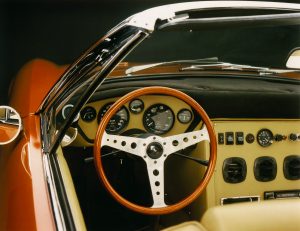
Super-rare, and redolent of a golden age of jet-set luxury, it’s easy to see why the Monteverdi High Speed 375 coupé and its variants have become such hot collector’s items. They simply don’t make ‘em like that anymore – beautiful and bespoke cars into which as much love has been poured as any legendary Swiss watch.
If you can find a Monteverdi High Speed for sale today, expect to dig deep if you want to own a slice of Swiss motoring history. One of the most recent examples to come under the hammer was a 1970 model 375L sold by Bonhams which, despite requiring restoration, fetched CHF155,250 before buyer’s premium and taxes.
Such is the thirst for all things Monteverdi among the global ‘petrolhead’ community that a leather bound, 304-page book has been produced to help satisfy the growing curiosity about the man and his cars. You can order a copy – in English or German – here.
Changing consumer tastes, environmental concerns, and the sheer scale of the barriers to entry mean that Switzerland is unlikely ever to boast another domestic car manufacturer, let alone one to match the luster and legend of Monteverdi. We should cherish these automotive auteurs of a bygone age, and the stylish, soulful vehicles they gave us.
Enhance your entrepreneurial expertise
Our Master’s in Hospitality, Entrepreneurship and Innovation takes you on a journey of innovation and entrepreneurship, from idea to business model and then to market.
















